Misperceived Discrimination
Opening up a New Field of Research
Merlin Schaeffer
2025-06-17
Perceived Prevalence How prevalent is discrimination (mis)perceived to be?
 Source: ChatGPT 4
Source: ChatGPT 4
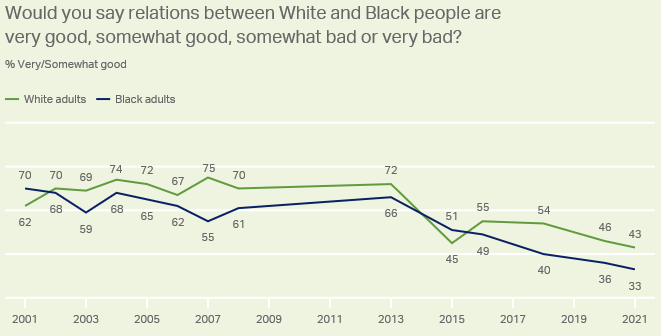 Source: Gallup
Source: Gallup
- Second dimension of Contested Discrimination: Competing views rightarrow competing perceived prevalences.
- Example (not directly related) representing my curiosity:
- Black and White people agree relations have considerably deteriorated in the US.
- But were things really better in 2001?
- A divergence of perceptions is more obvious when it comes to the topic of my work.
- ChatGPT graphic:
- How come that the same reality may be perceived so differently?
- Is there also a trend over time?
- How do these perceptions deviate from "reality"?
Perceived Prevalence How prevalent is discrimination (mis)perceived to be?
 Source: ChatGPT 4
Source: ChatGPT 4
| Social Mechanism | Minority | Majority |
|---|---|---|
| Divergent Awareness | Integration → awareness of group's enduring marginalized status. |
Minority integration → impression of society's successful diversification. |
| Divergent Definition | Claim to equality → increased sensitivity & confidence to interpret subtle events as discrimination. |
Maintain way of life and privileges → set high standards for what constitutes discrimination and being accused of it. |
| Divergent Opportunity Structure | ... a minority experiences it 13 times(!) more often (937≈13). | For every interaction in which a (Danish) majority member engages in or witnesses discrimination, ... ← |
- Second dimension of Contested Discrimination: Competing views rightarrow competing perceived prevalences.
- Example (not directly related) representing my curiosity:
- Black and White people agree relations have considerably deteriorated in the US.
- But were things really better in 2001?
Three social mechanisms could explain a trend of divergence.
Do the 3 mechanisms drive perceptions away from "reality"?
The field lacks a methodology to measure misperceptions of discrimination – a crucial barrier.
- Remainder of talk: My experimentation with various methods to measure misperceptions of discrimination.
- But no answer yet, whether these three social mechanisms drive them!
How accurately do majority and minority citizens
perceive ethno-racial discrimination?
We cannot observe
hidden intentions.
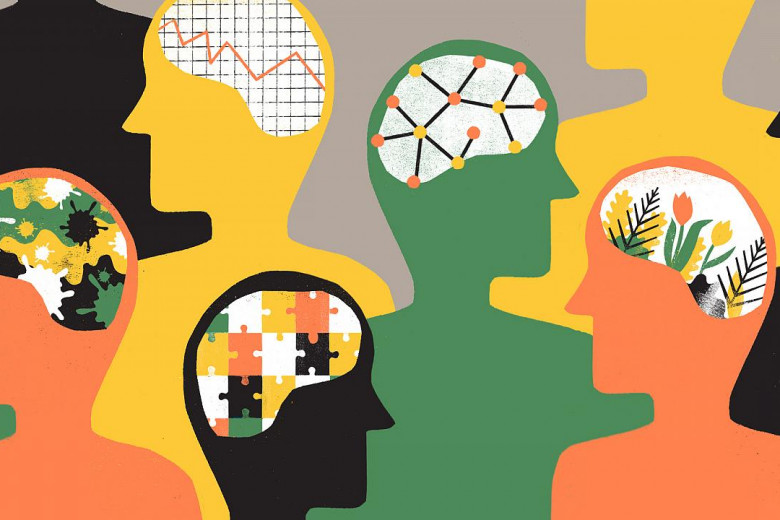
How accurately do majority and minority citizens
perceive ethno-racial discrimination?
We cannot observe
hidden intentions.



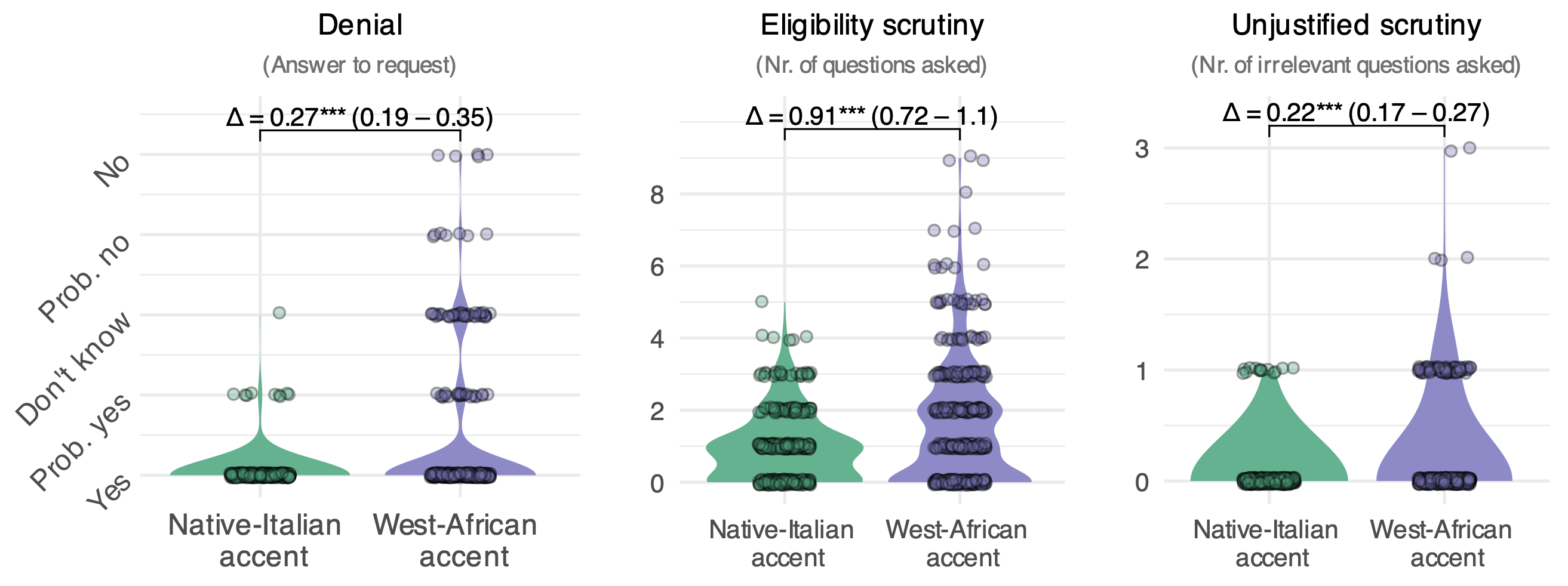 Source: Schaeffer, Krakowski, Romarri, and Rosenberg (2024)
Source: Schaeffer, Krakowski, Romarri, and Rosenberg (2024)
→ Limitation: Fictitious cases identify discrimination in the aggregate!
Misperceived Prevalence of Discrimination
Claim 1: Mainstream majority members tend to overperceive prevalence of minority discrimination.
Claim 2: Lack of awareness does not explain low support for anti-discrimination legislation.
Schaeffer, Merlin, Krzysztof Krakowski, and Asmus Olsen (2024): “Correcting Misperceptions about Ethno‑Racial Dis‑crimination: The Limits of Evidence‑Based Awareness Raising to Promote Support for Equal‑Treatment Policies.” American Journal of Political Science: 10.1111/ajps.12933
- First method: Misperceived prevalence.
- Focus on majority members: Native-born Danes with native-born parents.
Misperceived Prevalence
Now we are interested in hearing your thoughts on a recent social science study.
Researchers from the University of Copenhagen conducted a study on discrimination against non-Western minorities in Danish primary schools. They did this by sending fictitious applications to primary schools in Denmark, where a parent requested to transfer their child to the school's 3rd grade.
The fictitious applications were exactly the same except for one thing: the name of the father of the child who was to be admitted to the school and who sent the email. Half of the applications had a typically Danish-sounding name such as "Peter Nielsen," while the other half had a typically Muslim-sounding name such as "Mohammad Osman."
The researchers wanted to find out whether schools would view the exact same application more positively if it was sent by a parent with a Danish-sounding name compared to a parent with a Muslim-sounding name.
Out of 100 fictitious applications with Danish-sounding names, 25 of the applications were able to get the child admitted to the school.
What do you think: out of 100 fictitious applications with Muslim-sounding names, how many of the applications were able to get the child admitted to the school?
- Inspired by two economists: We explain field experiment and ask people what outcome they suspect.
Misperceived Prevalence
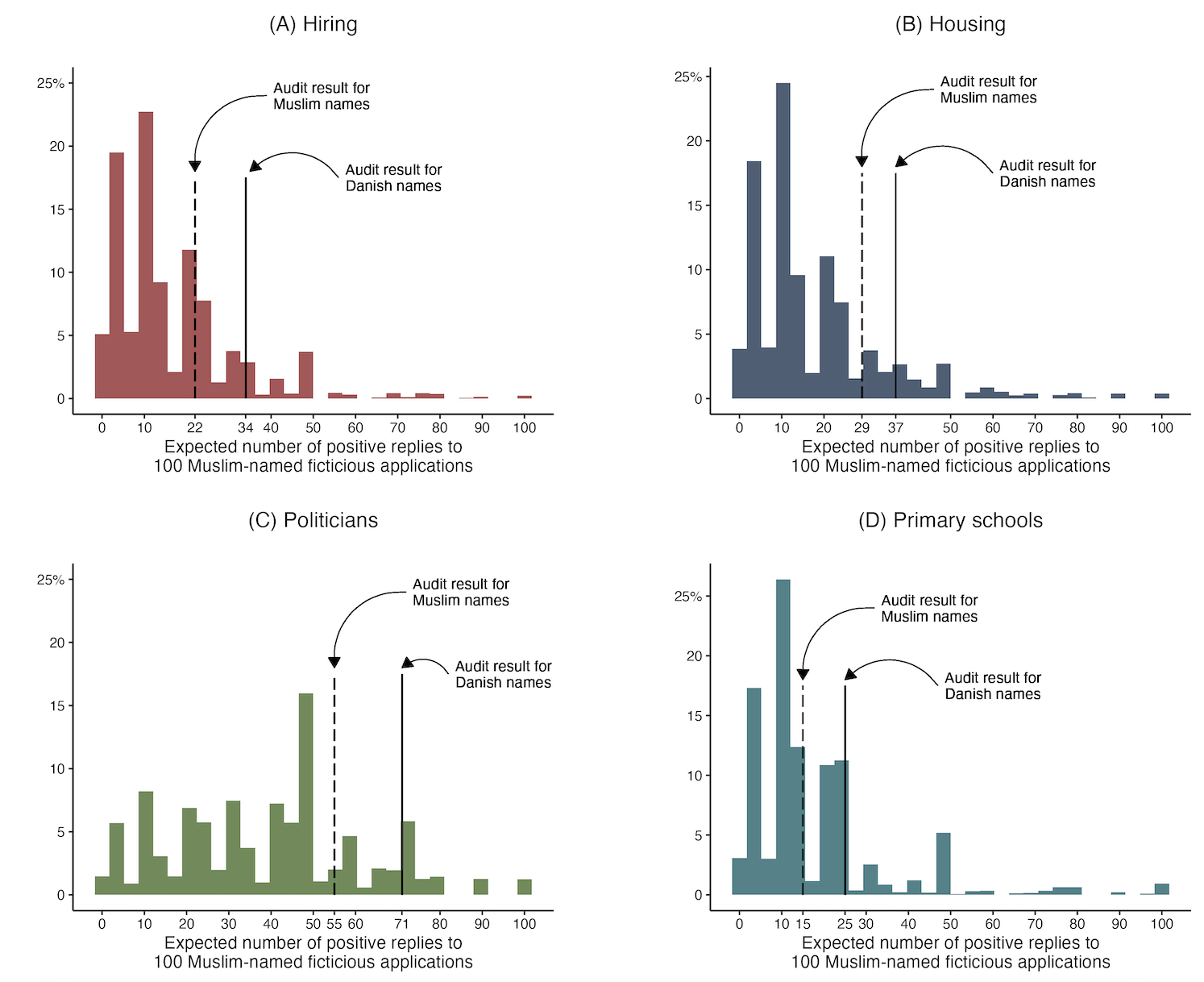
- We did this with all filed experiments conducted in DK so far: Peter, Asmus, etc.
- Let me help you interpret this.
Misperceived Prevalence

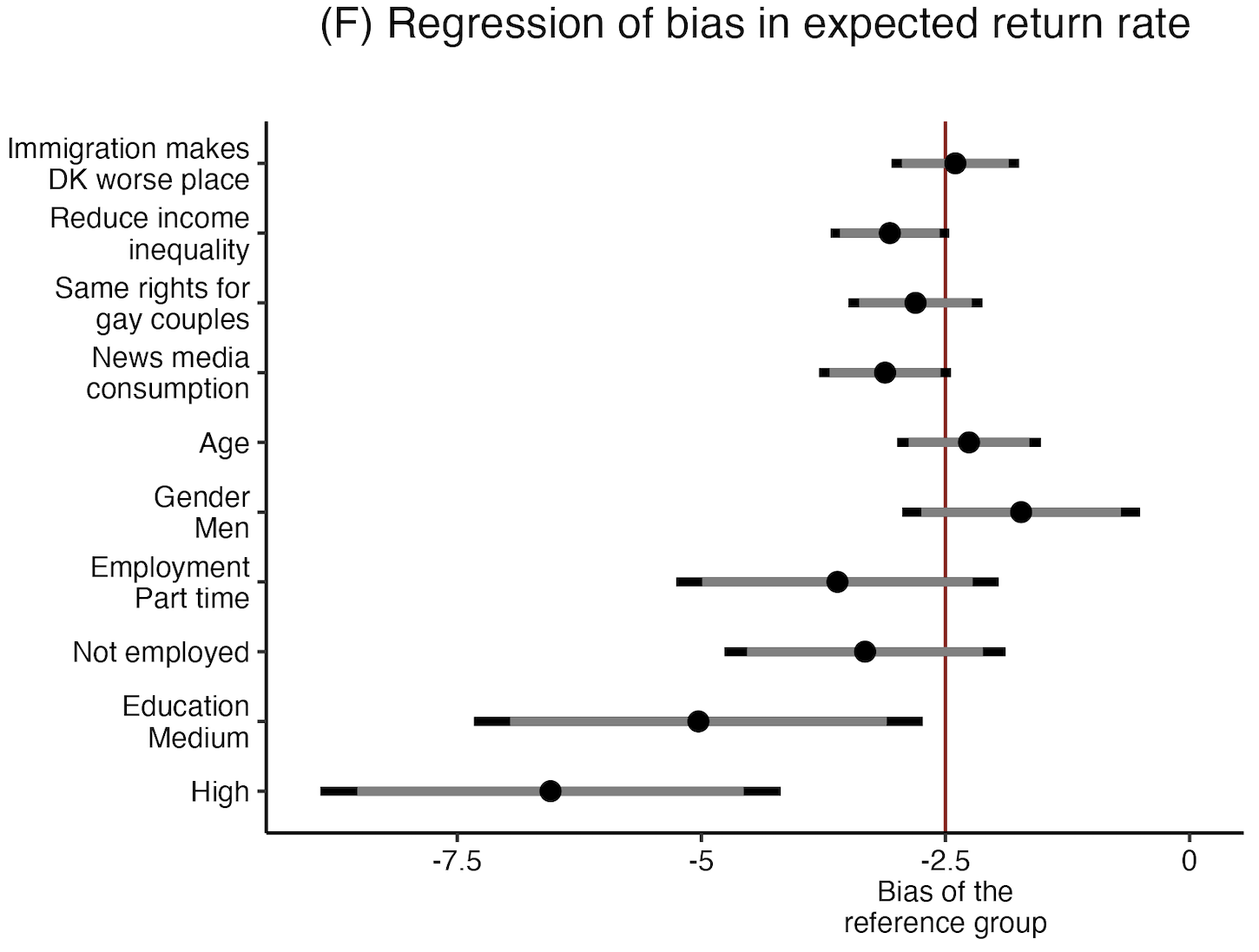
- We did this with all filed experiments conducted in DK so far: Peter, Asmus, etc.
- Let me help you interpret this.
- In contrast to 3 mechanisms: No evidence of vested interest in perceiving little discrimination.
- Even among those who are against immigration!
- Only education: We academics are more off!
Misperceived Prevalence
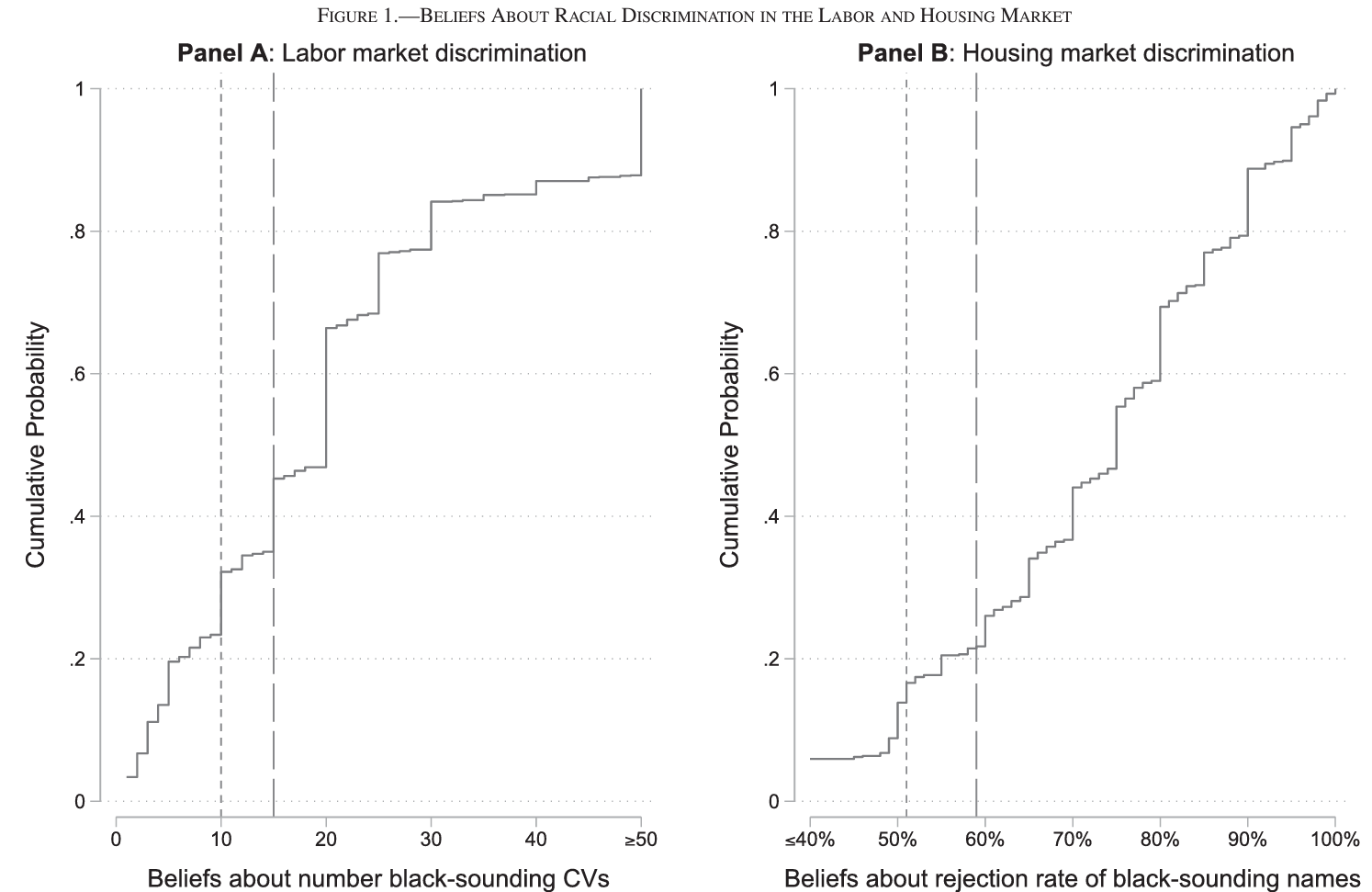 Source: Haaland and Roth (2023)
Source: Haaland and Roth (2023)
- Same in the US for discrimination against Black people.
Misperceived Prevalence
 Source: Haaland and Roth (2023)
Source: Haaland and Roth (2023)
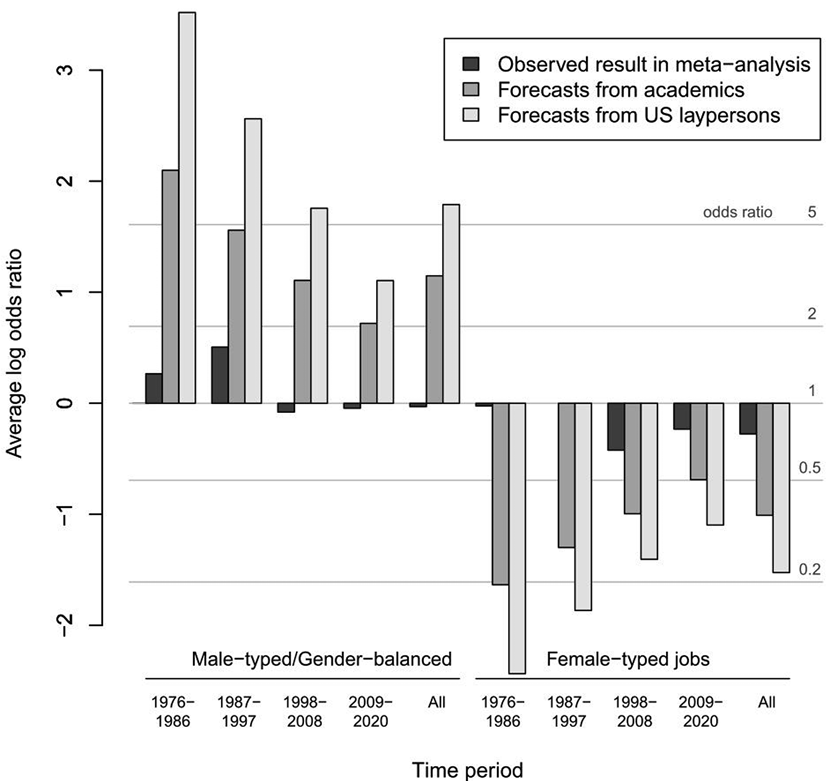
Source: Schaerer, du Plessis, Nguyen, van Aert, Tiokhin, Lakens, Giulia Clemente, Pfeiffer, Dreber, Johannesson, Clark, and Luis Uhlmann (2023)
- Same in the US for discrimination against Black people.
- Same for how prevalent we believe gender discrimination to be.
Factual Correction
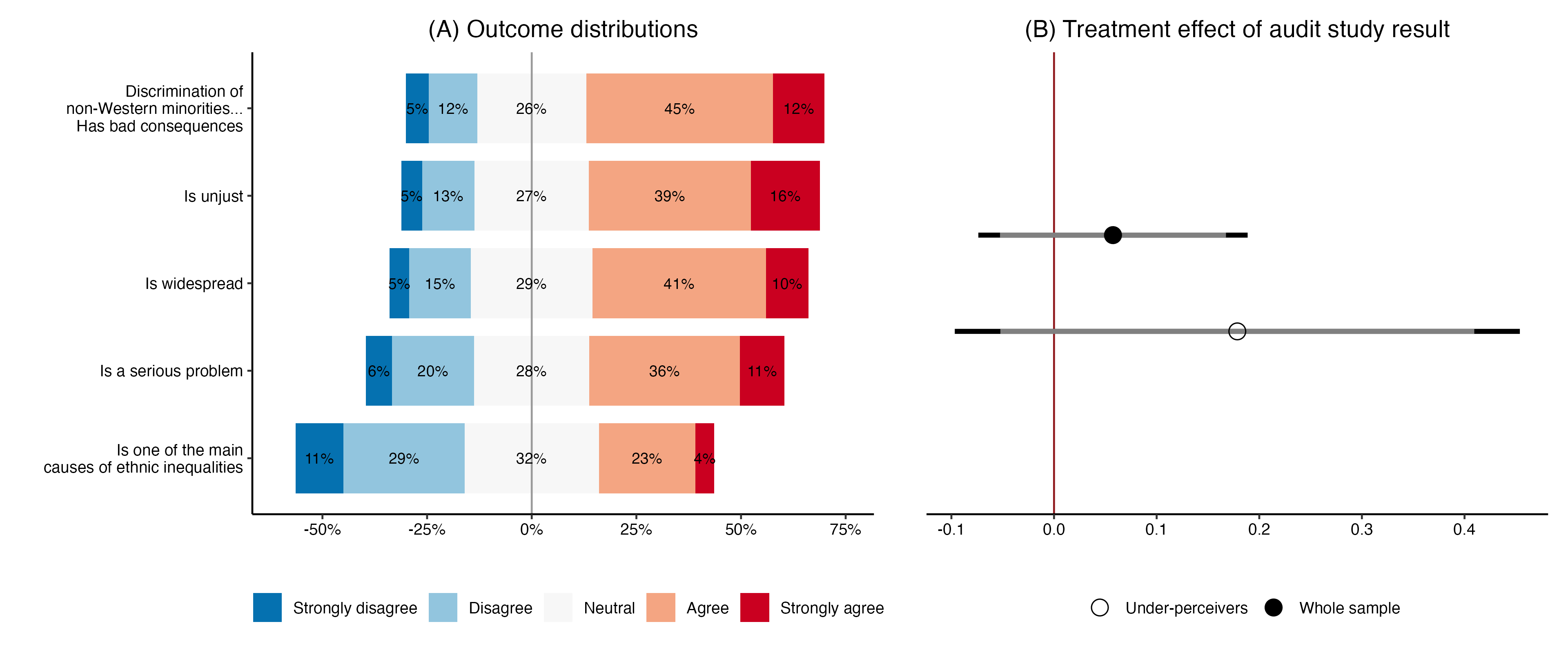
- Unsurprisingly, informing people about the actual result, does not change their recognition of the problem.
- Not even among those who underestimated the extent of discrimination.
Divergent Definition?
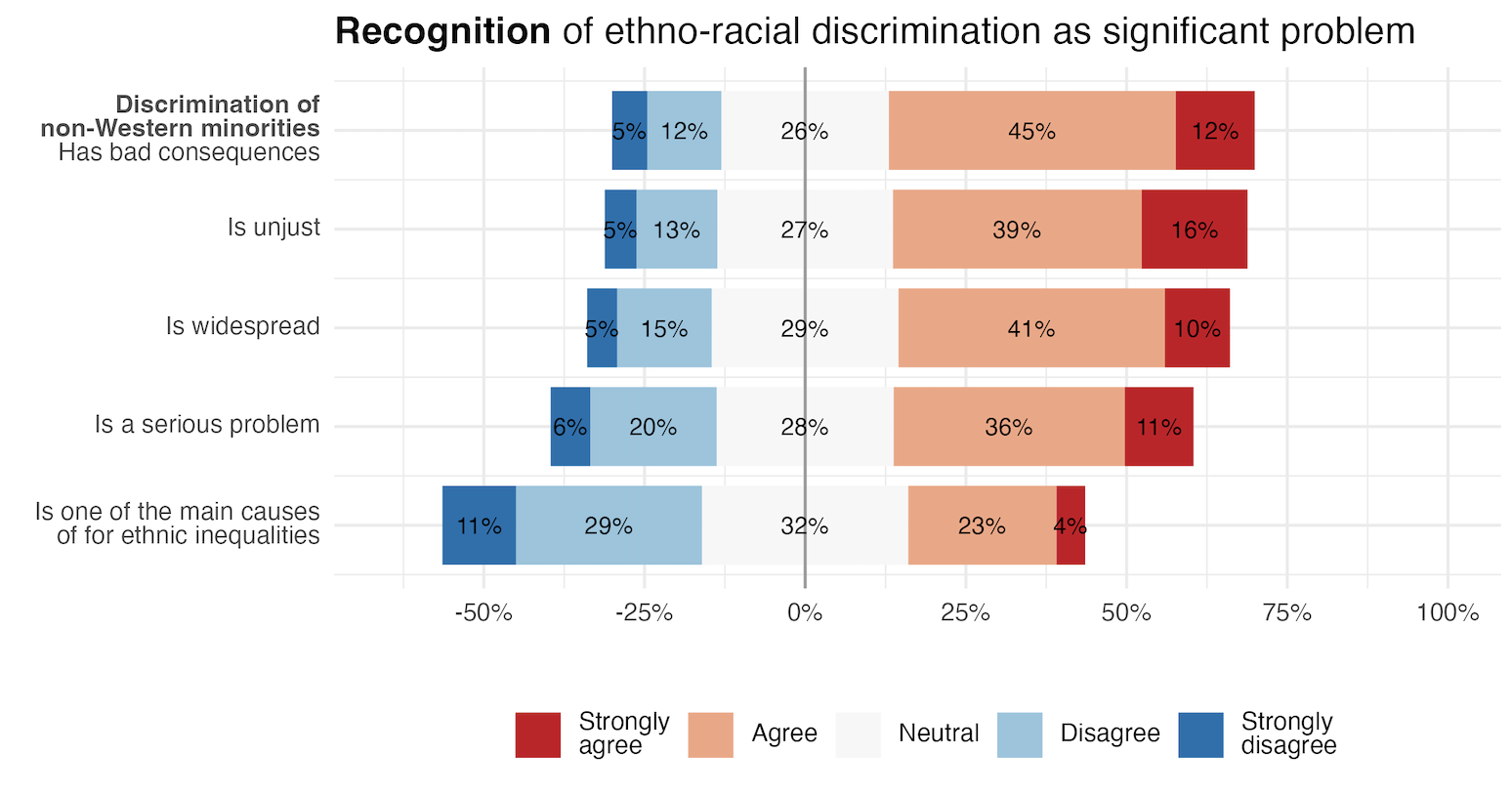

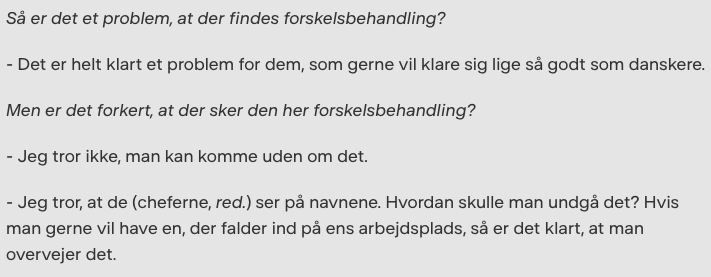 Source: Østergaard (2020)
Source: Østergaard (2020)
- But maybe the causality runs the other way around:
- Because its not seen as unjust, it is prevalent?
Misexpected Personal Discrimination
Claim 3: Typically, immigrant minority members do not expect to be discriminated, but when they do, their expectations tend to be inaccurate.
Claim 4: Immigrant minority members tend to over-generalize from prior experiences of discrimination.
Claim 5: This over-generalization is costly.

Collaborators: Judith Kas, Pia Hagedorn, and Nina Magdeburg.
- I initially started thinking about this 10 years ago.
- My original question was another one: Are there negative consequences of perceiving too much discrimination?
- Does it make you unhappy beyond actual reason for it?
- Personal discrimination: Do you misperceive the discrimination that you experience?
- Much more difficult: Actual: Repeated experimental observations for real people who can have perceptions!
Central Idea Mutual evaulation in behavioral games
| Sample | N | % |
|---|---|---|
| Mainstream | 1348 | 47.7 |
| Immigrant | 888 | 31.4 |
| Desc. of immigrant | 589 | 20.8 |
True first name & city
from public registers
Alisina, Ahmad, Anne, Binyamin, Joyce, Somaia, Sarah, Hayriye, Saibe, Björn, Salem, Fabienne, Sadet, Linda, Margarita, Ali, Joseph, Mhd Kheir, Baran, Bahaa, Jebran, Reno, Seiji, Irina, Ajsel, Christine, Rahim, Yaw Abrefa, Mark, Anjali Dev, Elmar, Anke, Laura, Heiko, ...

- Uni of observation is an interaction, not a person!
LLM-Based Coding of Names

library(text)## 3. Predict ethnicity of first names.##############################################zeroshot_ethnic <- text::textZeroShot( # The list of first names to be predicted. sequences = vornamen, # The possible origins for the first names. candidate_labels = c("deutsch", "türkisch", "arabisch oder muslimisch", "ostasiatisch oder chinesisch", "osteuropäisch oder slavisch"), # Predict multiple origins for each first name. multi_label = TRUE, # The template for the hypothesis that is tested. hypothesis_template = "Dieser Vorname klingt {}.", # The model that is used to predict the gender. model = "Sahajtomar/German_Zeroshot")LLM-Based Coding of Names

library(text)## 3. Predict ethnicity of first names.##############################################zeroshot_ethnic <- text::textZeroShot( # The list of first names to be predicted. sequences = vornamen, # The possible origins for the first names. candidate_labels = c("deutsch", "türkisch", "arabisch oder muslimisch", "ostasiatisch oder chinesisch", "osteuropäisch oder slavisch"), # Predict multiple origins for each first name. multi_label = TRUE, # The template for the hypothesis that is tested. hypothesis_template = "Dieser Vorname klingt {}.", # The model that is used to predict the gender. model = "Sahajtomar/German_Zeroshot")
10 Trust Games per Participant
- Majority participants:
- 3 games with mainstream players.
- 7 games with immigrant origin players.
- Immigrant origin participants:
- 7 games with mainstream players.
- 3 games with immigrant origin players.
→ Observe actual € sent to others.
| Name | N | % |
|---|---|---|
| East-European sounding name | 1828 | 27.2 |
| German sounding name | 1716 | 25.6 |
| Muslim sounding name | 1471 | 21.9 |
| East-Asian sounding name | 539 | 8.0 |
| Turkish sounding name | 301 | 4.5 |
| Other | 854 | 12.7 |


What did their game partner's entrust them?
- Now focus on games with mainstream partners.
Actual Trust Discrimination By game partner
Act Discrij=¯€j(Germ. name)−€ij

After the 10 Games Expectations to be discriminated
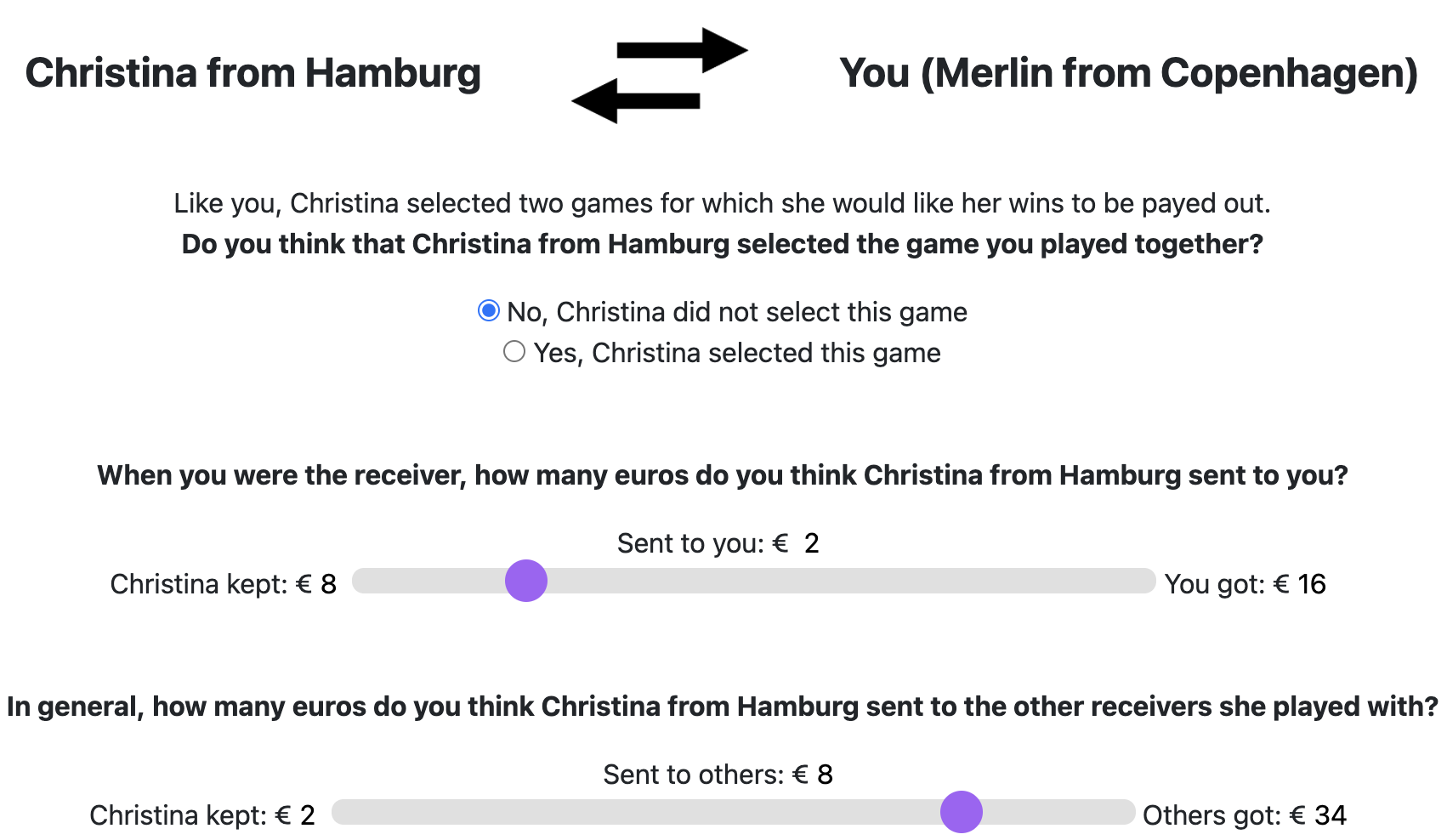
Actual vs. Expected Trust Discrimination
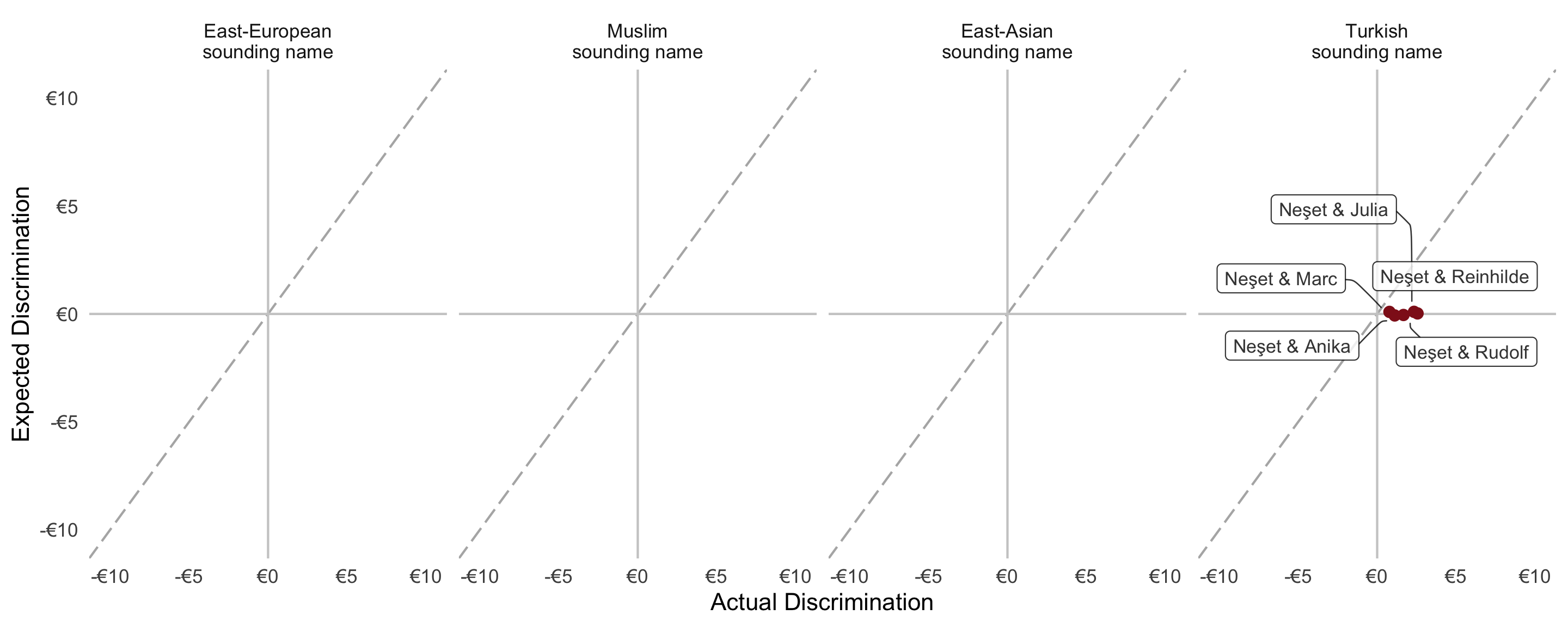
Actual vs. Expected Trust Discrimination
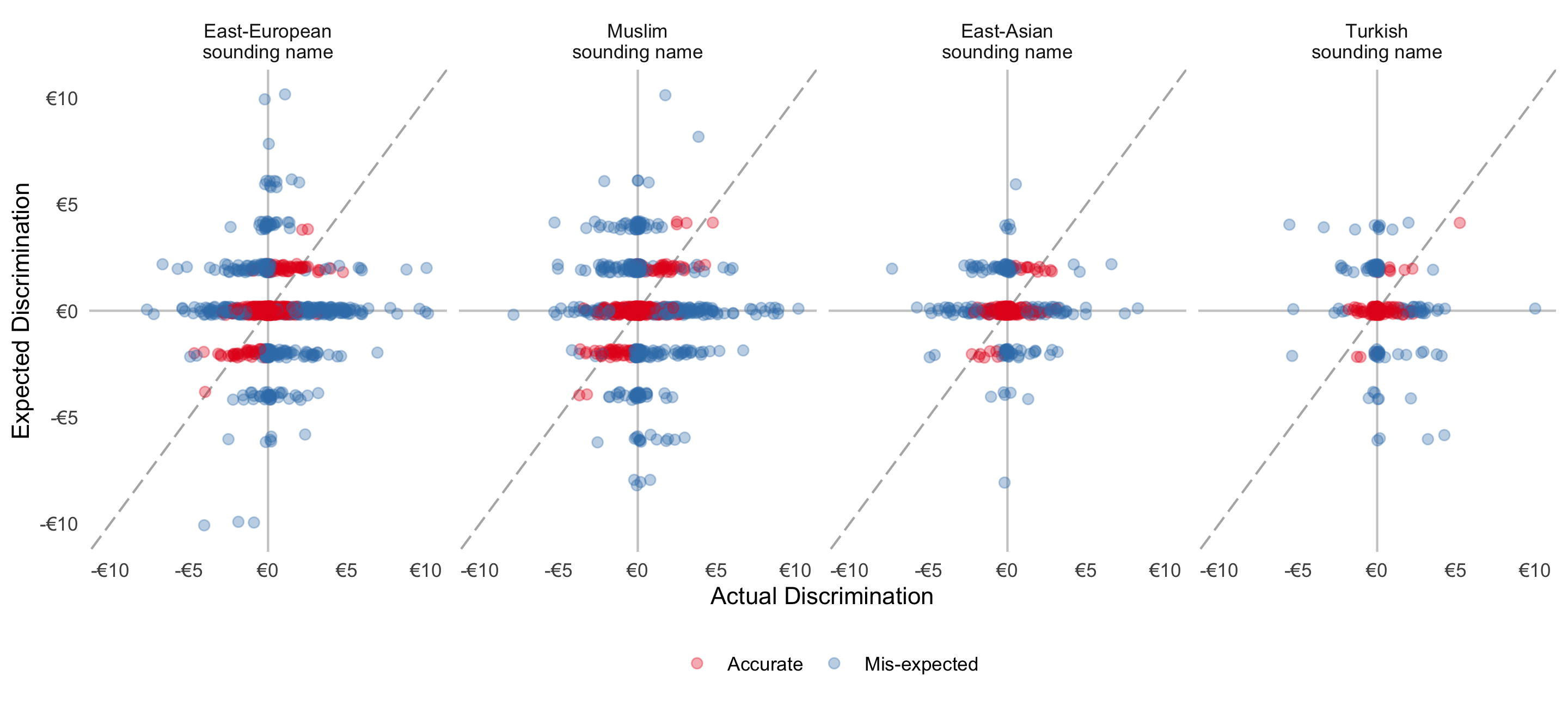
Actual vs. Expected Trust Discrimination
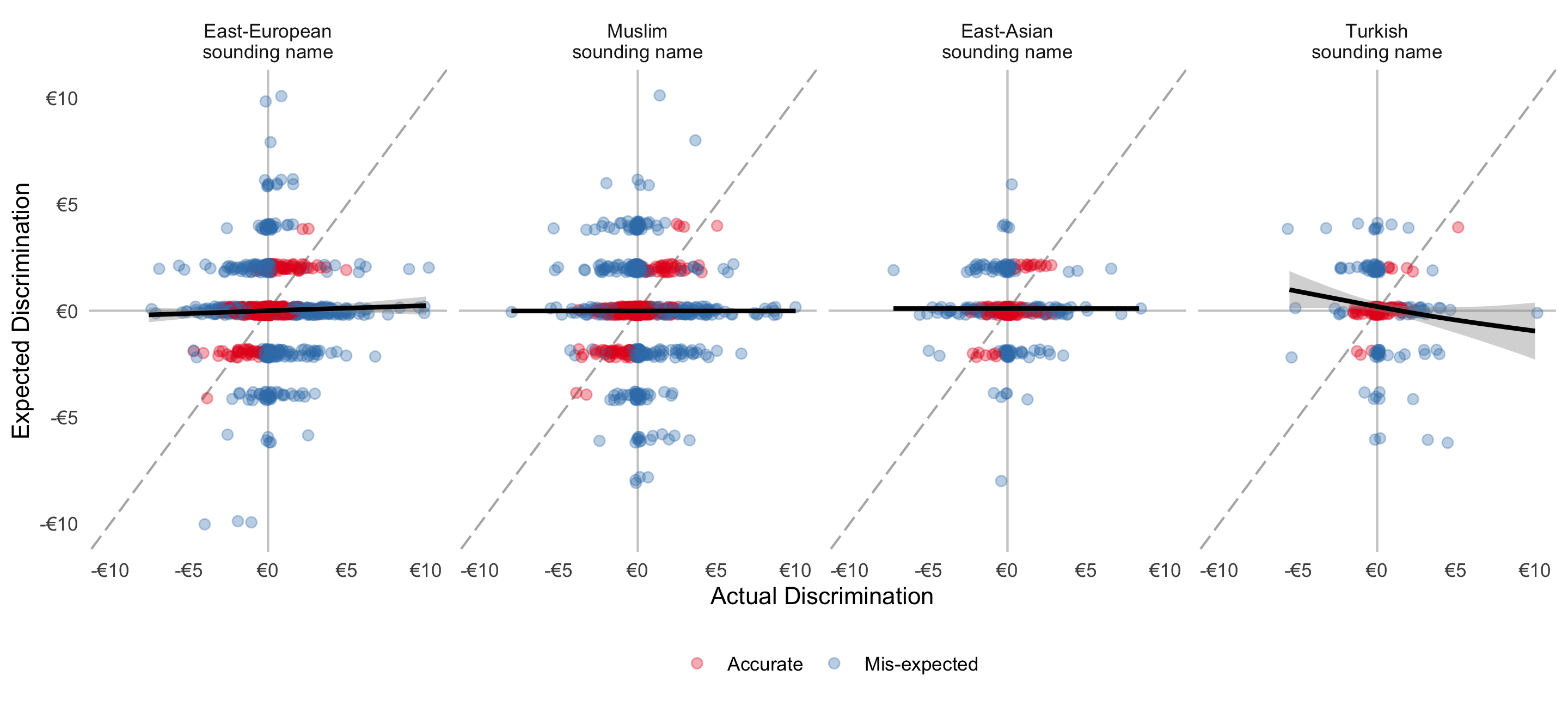
Predictors of Misexpected
Trust Discrimination
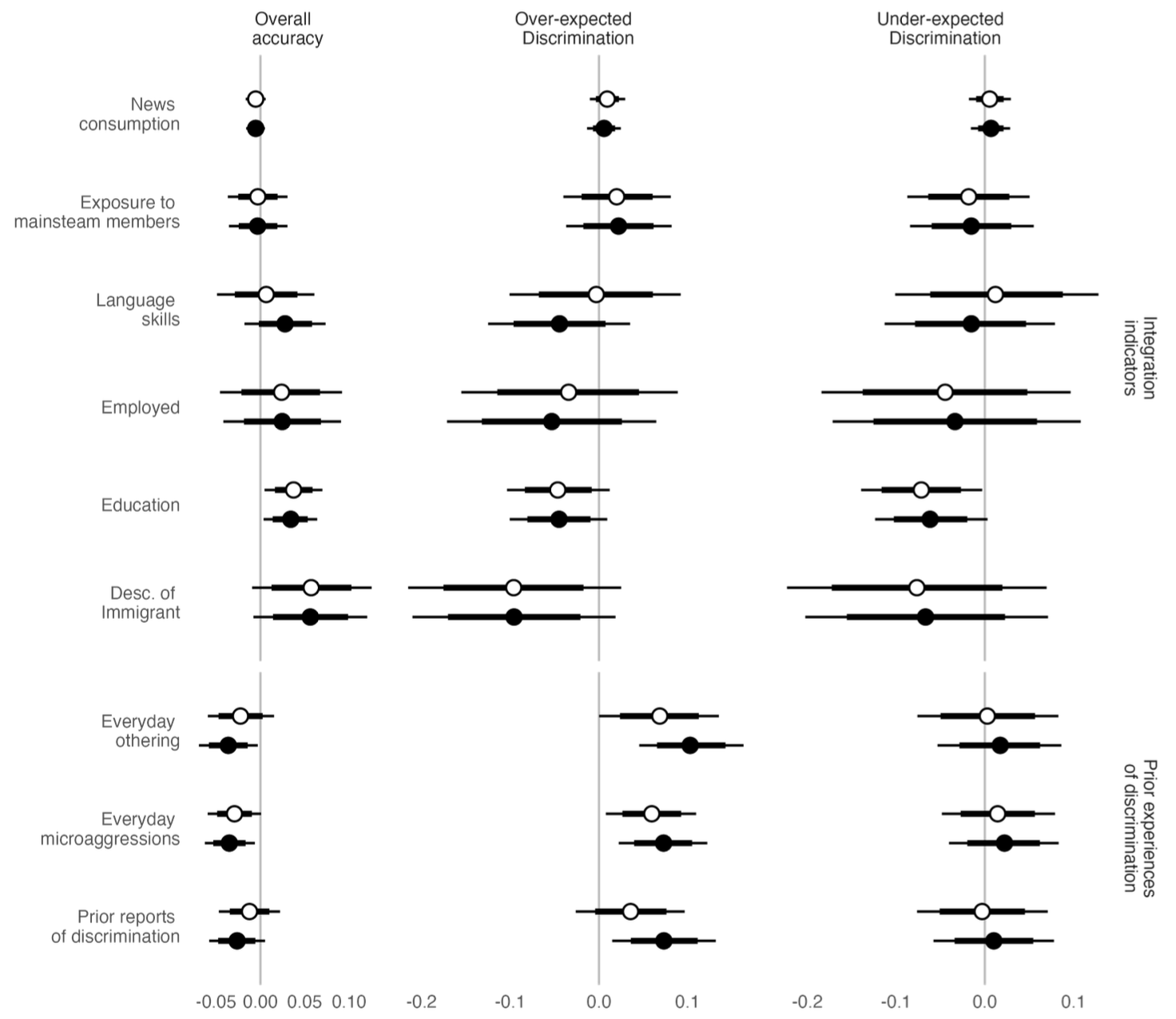
The Cost of Misexpected Trust Discrimination

The Cost of Misexpected Trust Discrimination


(−0.766€+−0.401€)×3×23×2=−4.7€
−4.7€20€=−23.5%
Misperceived Personal Discrimination

Claim 6: Immigrant minority members tend to over-interpret ambiguous signals as evidence of discrimination.
Claim 7: This seems to happen particularly among those with prior experiences of discrimination.
Follow-up Experiment Disadvantage cue
On average, your ten game partners sent and thereby entrusted 6 € to you.
In addition, your ten game partners played trust games with other 68 more participants. 25 of these other participants had names that sound typically German.
Below you see a selection of three of these participants with names that sound typically German.
On average, your game partners sent and thereby entrusted 8 € to these three persons:
Annegret from Hamburg
Klaus from Berlin
Hartmut from München
The three have thus received 2 € more than you. How do you rate this result?
Follow-Up Experiment Advantage cue
On average, your ten game partners sent and thereby entrusted 8 € to you.
In addition, your ten game partners played trust games with other 68 more participants. 25 of these other participants had names that sound typically German.
Below you see a selection of three of these participants with names that sound typically German.
On average, your game partners sent and thereby entrusted 6 € to these three persons:
Annegret from Hamburg
Klaus from Berlin
Hartmut from München
The three have thus received 2 € less than you. How do you rate this result?
Follow-up Experiment Equality cue
On average, your ten game partners sent and thereby entrusted 7 € to you.
In addition, your ten game partners played trust games with other 68 more participants. 25 of these other participants had names that sound typically German.
Below you see a selection of three of these participants with names that sound typically German.
On average, your game partners sent and thereby entrusted 7 € to these three persons:
Annegret from Hamburg
Klaus from Berlin
Hartmut from München
The three have thus received the same amount as. How do you rate this result?
My Name Played a Role ...
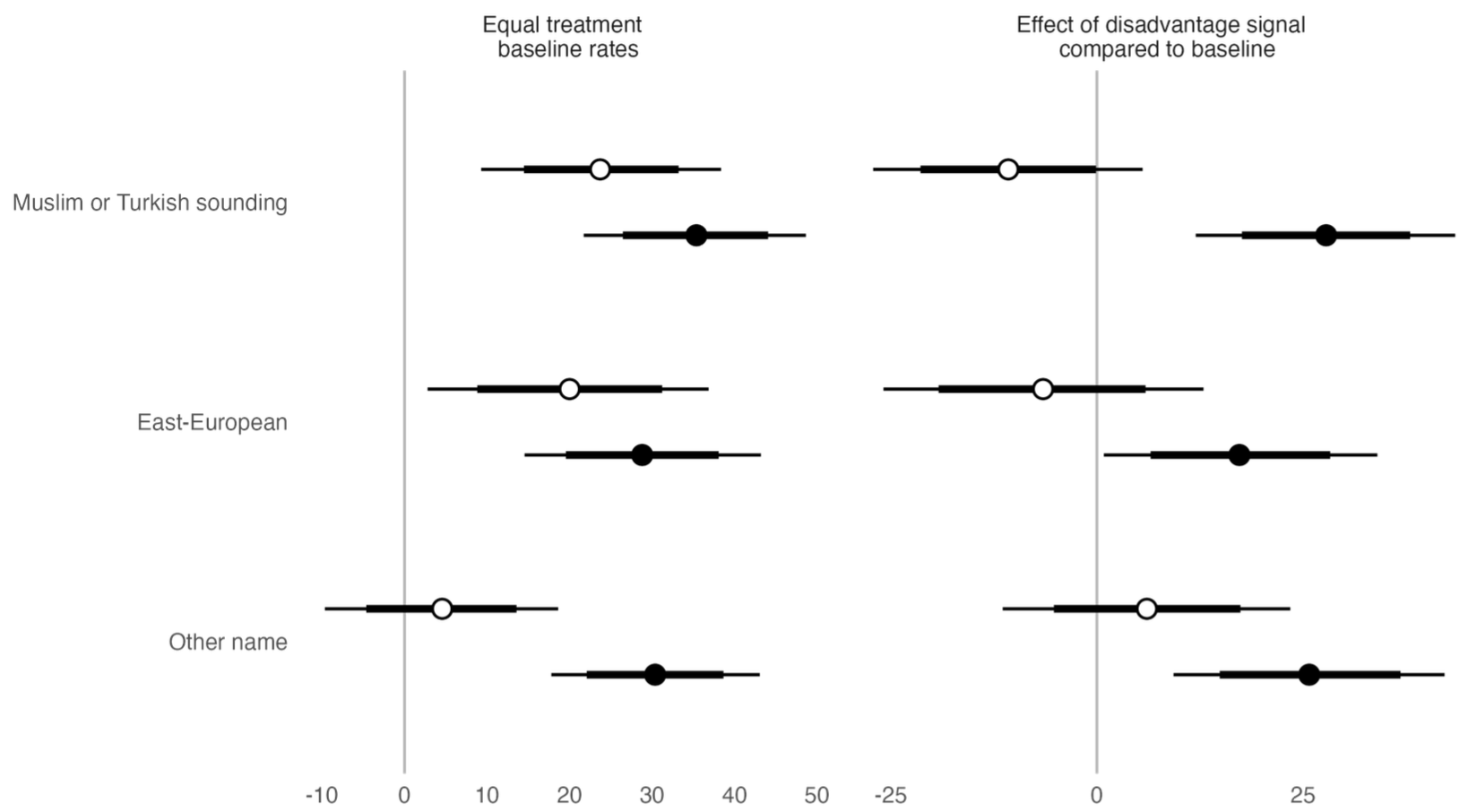

Effect of Disadvantage Signal Compared to Baseline
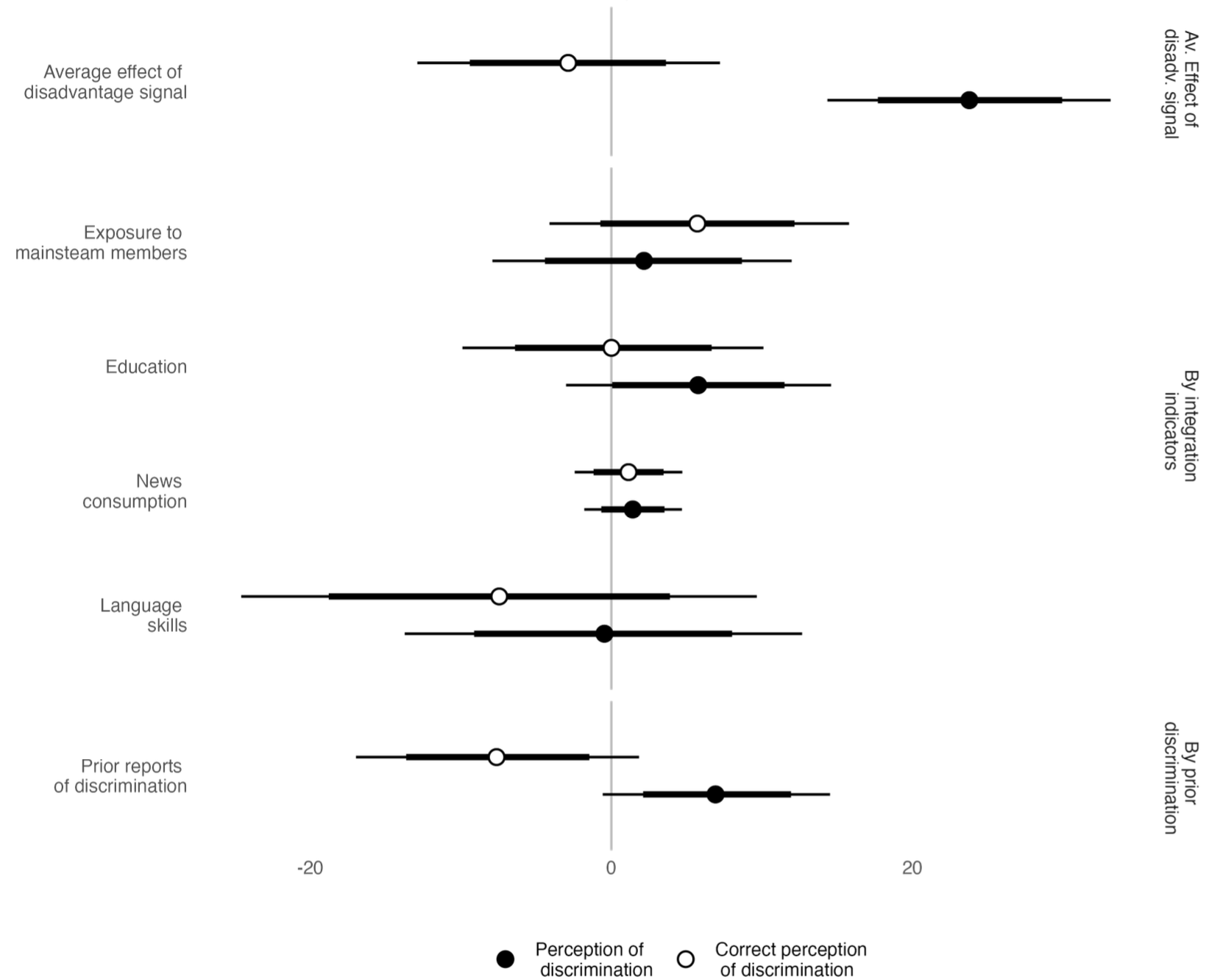
Conclusion for now ...
Because discrimination is often concealed, people struggle to accurately generalize their experiences to new situations and over-interpret signals of disadvantage.
This, in itself, results in additional downstream mental and economic costs.
Thank you for your attention!
Claim 1: Mainstream majority members tend to overperceive the prevalence of discrimination.
Claim 2: Lack of awareness is not the reason for low support for anti-discrimination legislation.
Claim 3: Typically, immigrant minority members do not expect to be discriminated, but when they do, their expectations tend to be inaccurate.
Claim 4: People tend to over-generalize from prior experiences of discrimination.
Claim 5: This over-generalization is costly.
Claim 6: Minority members tend to over-interpret ambiguous signals as evidence of discrimination.
Claim 7: This seems to happen particularly among those with prior experiences of discrimination.
References
Haaland, I. and C. Roth (2023). "Beliefs About Racial Discrimination and Support for Pro-Black Policies". In: Review of Economics and Statistics, pp. 40-53.
Østergaard, A. (2020). Detektor: Efter racismedebat – Dansk Folkeparti anerkender forskelsbehandling.
Schaeffer, M., K. Krakowski, A. Romarri, et al. (2024). "Far-right Electoral Success Exacerbates Administrative Discrimination Against Minorities: Evidence from a Field Experiment in Italy". In: Unpublished manuscript.
Schaerer, M., C. du Plessis, M. H. B. Nguyen, et al. (2023). "On the trajectory of discrimination: A meta-analysis and forecasting survey capturing 44 years of field experiments on gender and hiring decisions". In: Organizational Behavior and Human Decision Processes, p. 104280.
